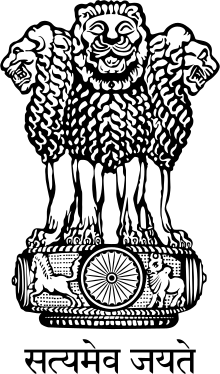Arms Act, 1959
The Arms Act, 1959 is an Act of the Parliament of India to consolidate and amend the law relating to arms and ammunition in order to curb illegal weapons and violence stemming from them.[1] It replaced the Indian Arms Act, 1878.
| The Arms Act, 1959 | |
|---|---|
 | |
| Parliament of India | |
Long title
| |
| Citation | Act No. 54 of 1959 |
| Territorial extent | India |
| Assented to | 23 December 1959 |
| Commenced | 1 October 1962 |
| Status: In force | |
The Arms Act was passed in 1959.
Chapters
The act is divided into six chapters.[2]
- Chapter I: Parliamentary
- Provides a short title and definitions of terms used in the act
- Chapter II: Acquisition, Possession, Manufacture, Sale, Import, Export, and Transport of Arms and Ammunition
- Explains rules and regulations around acquisition, possession, manufacture, sale, import, export and transport of arms and ammunition in India.
- Chapter III: Provisions relating to licences
- Details how to procure license, rules around grant, refusal, fees for license.
- Chapter IV: Powers and Procedure
- Provides details on the powers that the government officials have to enforce this act.
- Chapter V: Offences and penalties
- Explains punishments associated with breaking rules related to this act.
- Chapter VI: Miscellaneous
- Deals with the other miscellaneous parts of the act such as exemptions.
Current affairs
The Act has undergone many changes since 1959, the most recent being in 2010 through an amendment for the Arms Act.[3] There was also controversy around air guns to be included as part of this act which was rejected by the Supreme Court of India.[4]
Previous legislation
The Indian Arms Act, 1878 was an act regulating the manufacture, sale, possession, and carry of firearms.
Prior to the Indian First War Of Independence in 1857, there were few gun control laws in India.[5]
The act included the mandatory licensing to carry a weapon, but contained exclusions for some groups and persons, for instance "all persons of Kodava (Coorg) race".[6]
In a 1918 recruitment leaflet for World War I, Gandhi voiced disapproval of the act:[7]
“Among the many misdeeds of the British rule in India, history will look upon the Act depriving a whole nation of arms as the blackest. If we want the Arms Act to be repealed, if we want to learn the use of arms, here is a golden opportunity. If the middle classes render voluntary help to Government in the hour of its trial, distrust will disappear, and the ban on possessing arms will be withdrawn.”
In The New Cambridge History of India: Science, Technology and Medicine in Colonial India, scholar David Arnold examines the effect of the British Raj on Indian weapons, mining and metallurgy:[8]
The British were aware of the part metal-working had played in supporting indigenous powers in the past through the production of arms and ammunition, and, just as they introduced an Arms Act in 1878 to restrict Indian access to firearms, so they sought to limit India’s ability to mine and work metals that might sustain it in future wars and rebellions. This was especially the case with Rajasthan, a region rich in metals. In the 1820s James Tod identified the ‘mines of Mewar’ as one of the means that had enabled its masters ‘so long to struggle against superior power, and to raise those magnificent structures which would do honour to the most potent kingdoms of the west’. Indian skill in the difficult art of casting brass cannon had made Indian artillery a formidable adversary from the reign of Akbar to the Maratha and Sikh wars 300 years later. But by the early 19th century most of the mines in Rajasthan had been abandoned: the caste of miners was ‘extinct’.
See also
References
- "Archived copy". Archived from the original on 5 November 2013. Retrieved 2013-07-07.CS1 maint: archived copy as title (link)
- "Indian Arms Act 1959 - Index". Archived from the original on 15 May 2015. Retrieved 25 April 2015.
- "Cabinet approves tougher provisions for Arms Act". Hindustan Times. 15 July 2010. Retrieved 25 April 2015.
- Sharma, Shreyas (5 January 2012). "Supreme Court stays order classifying air guns as firearms". India Today. New Delhi, India. Retrieved 25 April 2015.
- https://statutory-law.knoji.com/gun-control-and-indian-arms-act-1877-during-the-days-of-the-raj/
- Punjab (India); Sir Henry Adolphus Byden Rattigan; Alweyne Turner; North-west Frontier Province (India) (1897). The Bengal regulations: the acts of the governor-general in council, and the frontier regulations ... applicable to the Punjab, with notes and an index. Civil and Military Gazette Press. pp. 1189–. Retrieved 22 July 2011.
- http://wagingnonviolence.org/feature/what-gandhi-really-thought-about-guns/
- Arnold, 100-101